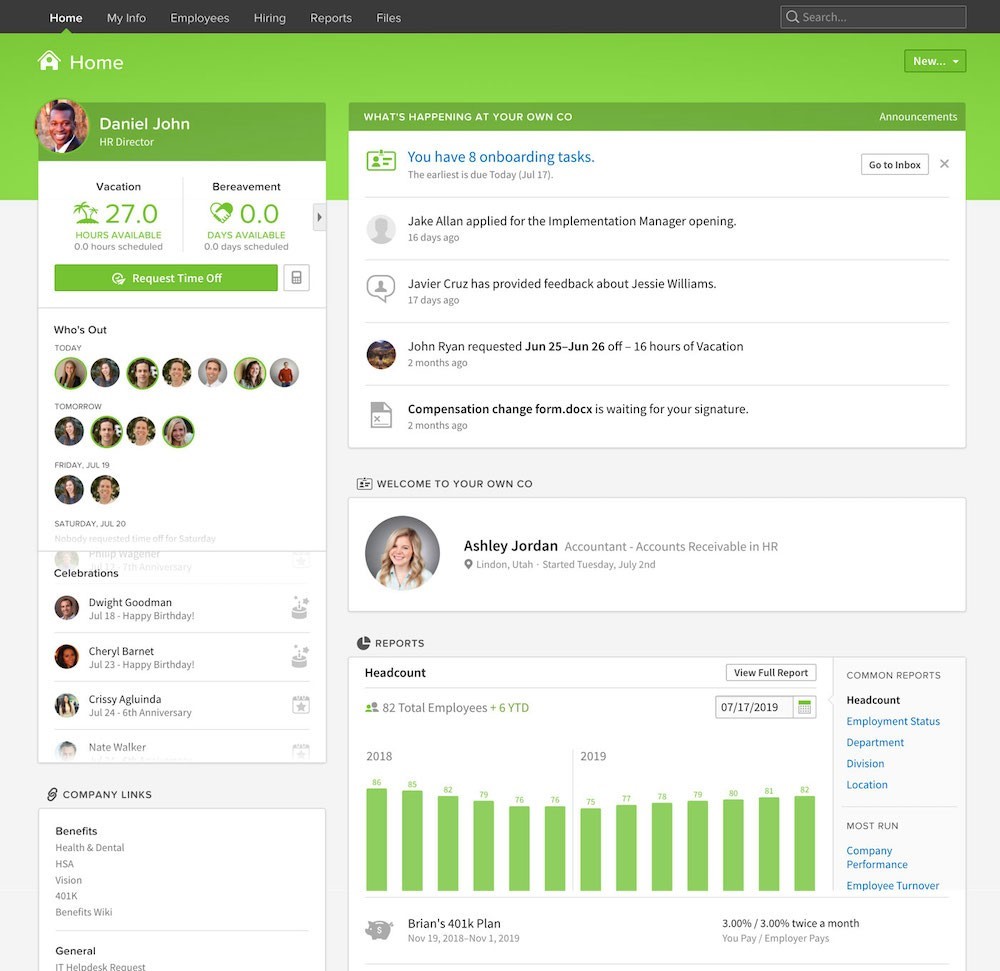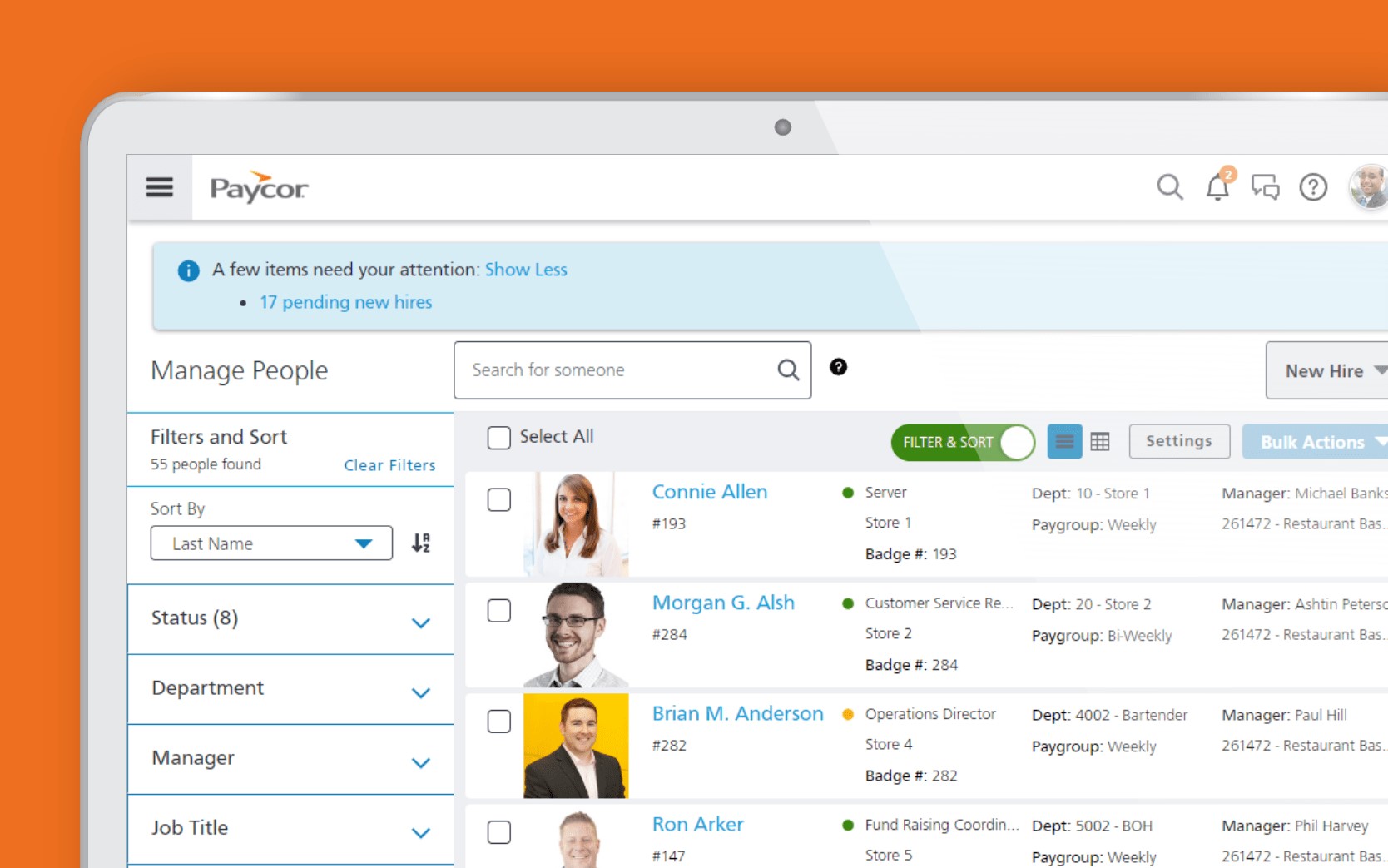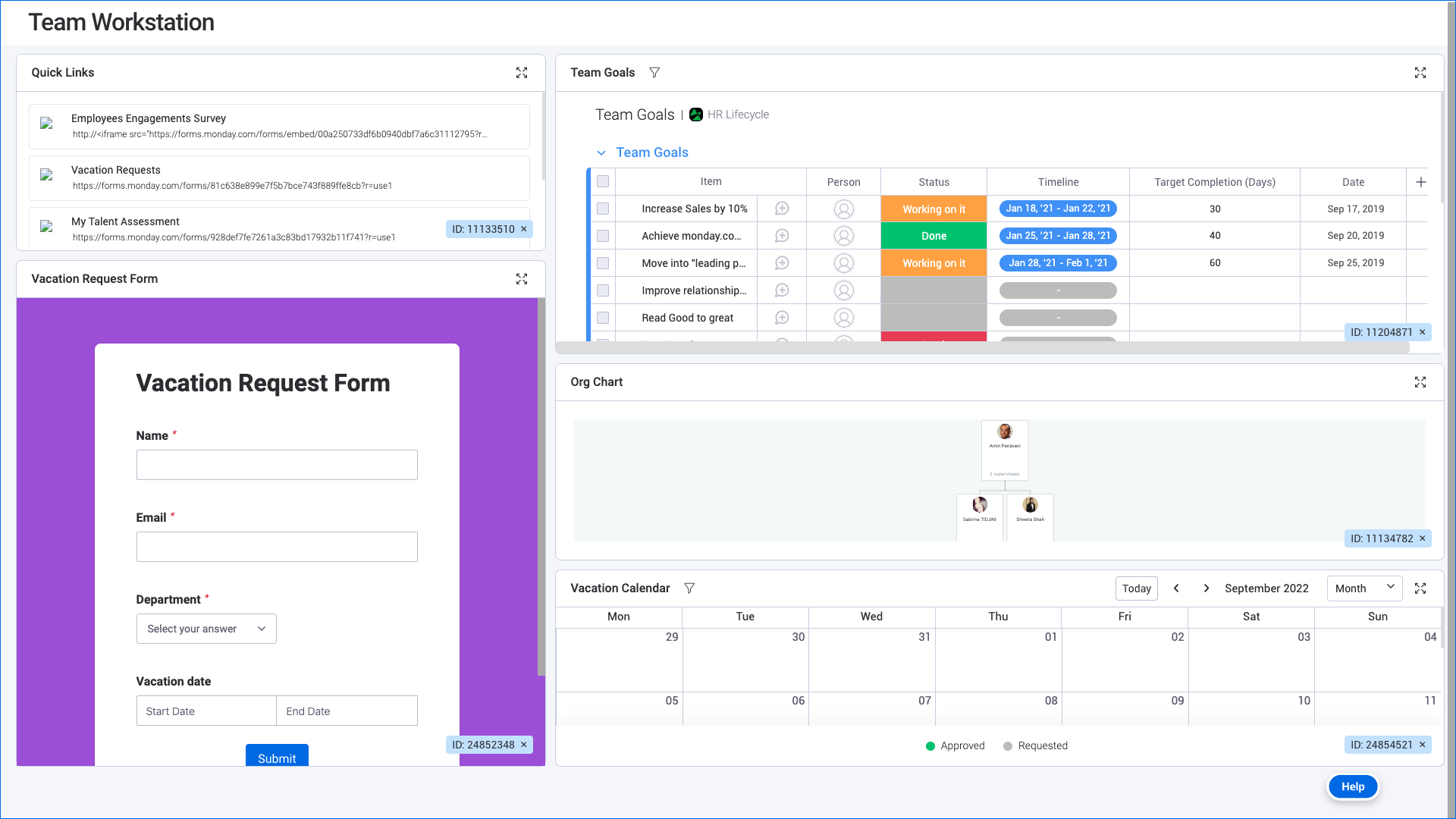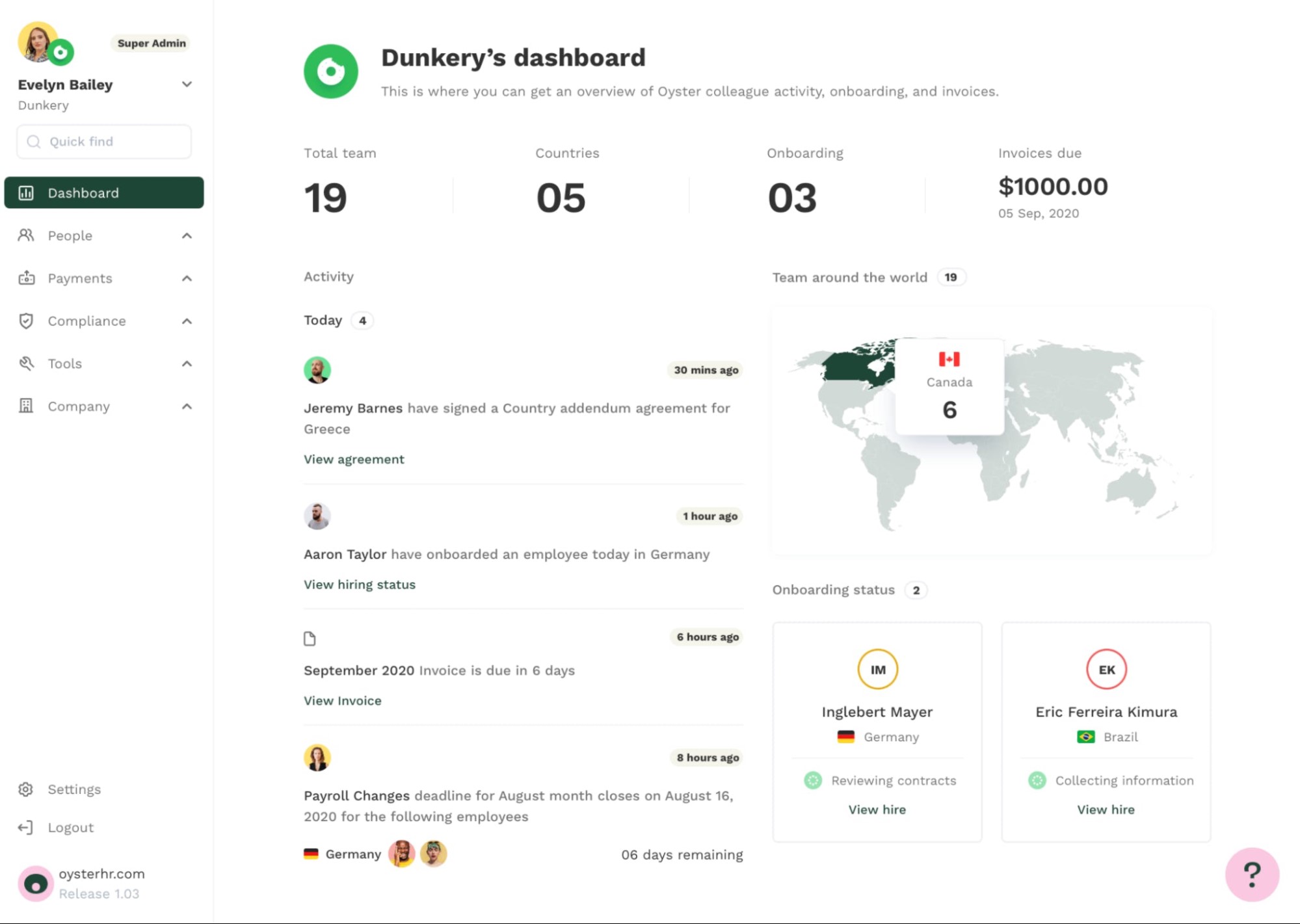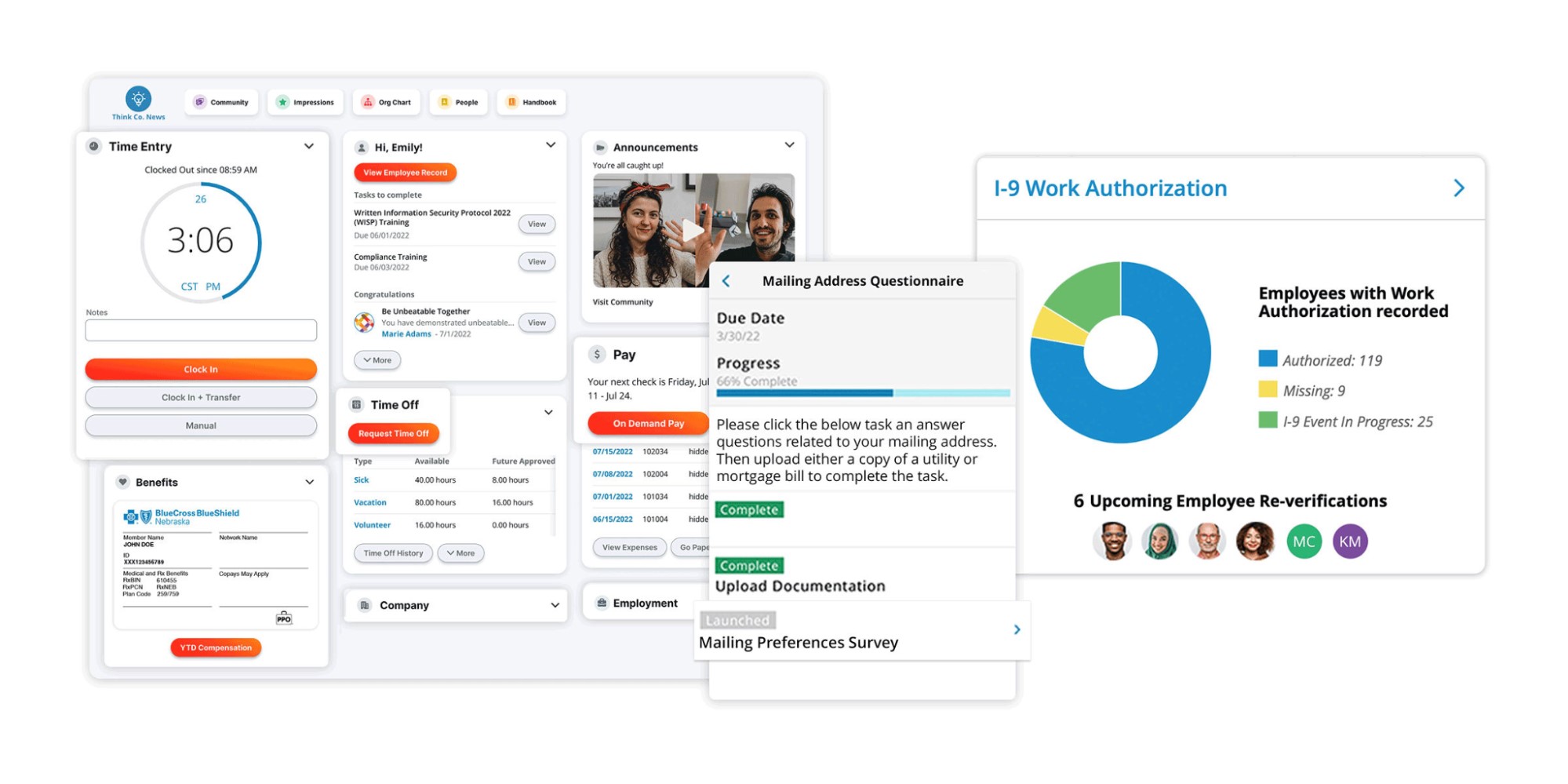HRIS systems: A guide for HR professionals looking to optimize people processes
The rise of HR technology has solved many tedious problems for professionals. Gone are the bulging filing cabinets and drawn-out processes for approving leave and managing employee benefits.
In solving old challenges, though, we’ve created new ones. Choosing between all the different HR software in the market has become an HR management skill.
Choosing a human resource information system (HRIS) is a top example.
The right one can streamline your processes and inform decision-making. The wrong one could cost you more time and money and negatively impact your workforce.
In this article, we walk you through HRIS systems, the best HRIS software for your business, and the best practices for getting the most out of your tech.
Table of contents
- What is an HRIS system?
- Why are HRIS platforms important to HR professionals?
- The benefits of HRIS systems
- 5 best HRIS systems
- 7 best practices for leveraging HRIS systems in your HR department
- 3 examples of companies succeeding with HRIS software
- Use skills testing to support your search for the right HRIS systems
- HRIS systems FAQs
What is an HRIS system?
An HRIS system is a solution that manages and processes employee information and automates essential HR tasks relating to that information.
HRIS software is an essential part of any HR tech stack.
One of the main examples of HRIS systems in action is payroll software, which stores employees’ salary and banking details and expedites the payment process.
HRIS vs HRMS vs HCM: What’s the difference?
The HR world is bursting at the seams with acronyms, so it’s no surprise that HRIS systems are commonly confused with other HR software – for example, HRMS and HCM.
Here’s a quick explainer of the different terms and their differences.
Abbreviation | Name | Definition |
HCM | Human capital management | Human capital management is the overall strategic approach to managing the employee lifecycle. It’s not “software,” per se, but integrated technology, such as HRMS and HRIS systems, enables it. |
HRIS | Human resources information system | HRIS systems handle administrative HR tasks and streamline day-to-day HR management. Core HR tasks include payroll, documentation, employee time tracking, and vacation scheduling. |
HRMS | Human resources management system | Companies use HRMS software to fill in the gaps in HRIS systems and focus on people management tasks like performance management. However, as top HRIS systems have become more sophisticated, there is now a lot of overlap between the two. |
Types of HRIS systems
There are five main types of HRIS systems out there, although many dedicated HR tools offer all these options as a single source with different product versions:
Operational. These HRIS systems handle day-to-day tasks like HR workflows and employee self-service.
Tactical. This type of HRIS software makes bigger-picture decisions, for instance, about recruitment, training, and compensation.
Strategic. Strategic HRIS platforms use technologies like AI in HR to generate insights for senior managers and help them make data-driven decisions.
Comprehensive HRIS. These platforms do all of the above in one package.
Limited. These focus on one task only and are best for small and mid-sized businesses and startups that need limited or niche functionality.
Why are HRIS platforms important to HR professionals?
Once upon a time, HR management was an overwhelmingly administrative role. Workers managed payroll manually on spreadsheets, and even after the advent of basic computing, accountants had to check employees’ timesheets and execute payments.
HRIS platforms store all this employee data in one place, enabling HR leaders to standardize and streamline HR processes.
One example is using HR automation software to trigger the correct payment protocols to pay employees’ salaries on time, but the uses of HRIS software go far beyond this.
HRIS software reduces human error and ensures you follow many recruitment best practices by default – for example, storing sensitive data securely or providing health insurance to all employees.
Instead of spending time on procedural tasks, HR professionals can prioritize higher-value projects like crafting a great company culture and motivating employees to do their best work.
Many cloud-based HRIS systems are easily scalable because you can simply upgrade to the next tier to access extended functionality.
The best insights on HR and recruitment, delivered to your inbox.
Biweekly updates. No spam. Unsubscribe any time.
The benefits of HRIS systems
One of the key benefits of HR solutions is that they reduce employee turnover rates by 5% to 15% – but how do they do this?[1]
Here’s how:
Benefits of HRIS systems | Summary |
1. Improves productivity for managers and employees | A Thai study investigating the areas most impacted by implementing HRIS software found that HRIS users reported spending less time on:
- Data entry - Processing paperwork - Internal communication - Making staff decisions[2]
These benefits free the workday for strategic initiatives and make the HR role more fulfilling. |
2. Saves money | Increasing efficiency helps your money go further. The Thai study cited above found that HRIS users believed cost savings to be the most significant benefit. |
3. Reduces errors and anxiety | HR errors cause significant damage to employee trust. For example, 44% of employees who receive incorrect payments on their pay stubs consider leaving their jobs as a result. Reducing these errors reduces stress for workers and HR personnel. |
4. Provides a better user experience | Top HRIS systems often integrate with or include employee experience software, which tracks employee engagement and improves employee communication. |
5. Enables data-driven decisions | Having all employee data in one place can better inform your spending – for example, showing you which recruitment platforms bring in the best employees to help you optimize recruitment marketing spending. |
6. Helps you stay current with compliance and regulations | Research shows the cost of non-compliance in 12 months can be at least $1m in business disruption alone.[3] Most top HRIS systems have built-in compliance software to prevent this. |
5 best HRIS systems
Now that you know about HRIS software and the benefits of HRIS systems for HR professionals, it’s time to choose your own.
To help you, we’ve shortlisted five of the best HRIS systems on the market.
Factors we considered
Before we jump into our recommendations, here are the factors we considered when making the list. You should also keep an eye on these when making your own decision.
Type of HRIS system. The type of HRIS software you choose depends on your HR needs. When first using HR for startups, you could prefer a limited tool to handle payroll instead of a comprehensive solution. We’ve chosen tools that offer a range of options.
Essential features. What is “essential” varies – for example, not everyone needs a mobile app integration, a benefits administration tool, or a self-service portal. However, most top HRIS systems should have an employee database for enrollment and payroll, time management, documentation, and compliance monitoring modules.
Security and privacy. You need a secure HRIS system to avoid violating data privacy laws like GDPR in the UK and Europe or HIPAA in the US.
Budget. We’ve chosen popular HRIS systems to suit a range of budgets.
5 best HRIS systems
If you’re short on time, here’s a summary of the best HRIS software for each business type, complete with pros and cons.
5 best HRIS systems | Benefits |
1. BambooHR | - Best for small businesses - Affordable price point - Scalable - Especially useful for managing PTO |
2. Paycor | - Best for payroll management - Good value for money - Excellent payroll management - Includes tax and compliance features |
3. Monday.com | - Best for automation and people management - Pricing is transparent - Starts with a free plan - Offers great recruitment integrations |
4. Oyster | - Best for global teams - Excellent for distributed workforce management - Encourages reliable contractors to prioritize you |
5. Paylocity | - Best for employee engagement - Powerful employee engagement tools - Strong customer support |
1. BambooHR: Best for small and medium businesses
BambooHR is a tactical HRIS system that offers a range of out-of-the-box capabilities, including:
Benefits tracking
Time off management
Document storage
The software solution works great for small and medium-sized businesses thanks to its affordable price point. It’s scalable, enabling an upgrade to the “Advantage” package to access tools like employee onboarding software.
However, the cost can add up when you consider various add-ons like payroll processing, taking the monthly cost above average.
Research shows that the average budget per user for HRIS software is $12,625, around $210 per month[4]
Pros | Cons |
- Best for small businesses - Scalable - Useful for managing paid time off (PTO) | - Cost can add up monthly - No advanced AI or strategic insight capabilities |
Rating: 4.5 out of five stars (G2)
Pricing at time of writing: $108 per month
2. Paycor: Best for payroll management
Paycor offers HR software with several payment tiers ranging from basic to comprehensive, starting at $99 plus $6 per employee per month. There is also an implementation fee to get the HRIS software up and running.
Paycor’s pricing structure makes it a good value for money, particularly for small-to-medium organizations looking to scale.
It naturally stands out for simple payroll management, which includes many tax and compliance features.
However, customer support can be slow, and the reporting features aren’t as intuitive as those of other HRIS platforms on this list.
Pros | Cons |
- Good value for money for SME - Includes recruiting and performance tools - Great payroll management feature | - Slow customer support - Less intuitive reporting features |
Rating: 4 out of 5 stars (G2)
Pricing at time of writing: Starts at $99 plus $6 per employee per month
3. Monday.com: Best for automation and people management
Monday.com is best known as a project management platform, but despite not being a traditional HR software solution provider, its HRIS software has much to offer, particularly regarding people management and HR automation.
Monday.com’s transparent pricing starts with a free plan and installation, making it easy to try.
It also offers great recruitment integrations, for example, an applicant tracking system to help you track candidates from recruitment platforms to your workforce.
On the downside, the platform doesn’t offer payroll software – a big hole – and its pricing can add up for small businesses.
Pros | Cons |
- User-friendly - A free plan and free installation, making it easy to try out - Great recruitment integrations | - No payroll software - Pricing can add up for small businesses |
Rating: There is no G2 rating specifically for Monday.com’s HRIS software, but the platform overall has a 4.7 out of five-star user rating.
Pricing at time of writing: Starts with a free plan
4. Oyster: Best for global teams
The HR platform Oyster is focused on global HR management and offers three tiers of service:
Contractor for streamlining the management of a global workforce
Employee, a comprehensive tool for global HR teams
Scale, a comprehensive and strategic tool for large and expanding global teams
Its focus on distributed workforce management and real-time payment tracking helps with managing contingent workers.
When three-quarters of freelancers say they don’t receive payment on time, with 16% waiting for more than two months, a reputation as a reliable employer can help you stand out and encourage reliable contractors to prioritize your business.[5]
Pros | Cons |
- Affordable pricing - Dedicated tools for distributed workforce management - Helps you pay all workers on time | - Only useful for distributed workforce management - Slow customer service |
Rating: 4.4 out of 5 stars (G2)
Pricing at time of writing: Starts at $29 per month
5. Paylocity: Best for employee engagement
Paylocity is a cloud HR system offering a suite of impressive HR tools, including:
Global payroll
Tax filing
Compliance
Applicant tracking
Performance management
Paylocity’s tools for employee engagement are particularly powerful, for instance, offering DIY content creation for employee learning and collaborative goal setting.
It also has robust customer support options.
However, Paylocity does not offer a free trial, and its pricing is not transparent online, making it hard to shop around and find the right tool.
Pros | Cons |
- Extensive compliance features - Strong employee engagement tools - Great ease of use and responsive customer support | - No free trial - No pricing information |
Rating: 4.4 out of five stars (G2)
Pricing at time of writing: Contact Paylocity for a quote
7 best practices for leveraging HRIS systems in your HR department
Of course, great HR management is not simply a question of what HRIS software you use but how you use it.
That’s why we’ve assembled seven tips for implementing HRIS platforms in your organization to ensure you get the best use of your software.
7 best practices for leveraging HRIS platforms
In a rush? Here’s the short version of our tips to unlock the benefits of HRIS solutions.
Tips for using HRIS systems | What it achieves |
1. Assemble the right team to implement the HRIS | Uses skills testing to put together a multifunctional team for the best implementation |
2. Shape your HRIS system to work with your existing processes | Ensures there are no gaps or disconnects between the HRIS system and existing processes |
3. Create an implementation roadmap | Prevents implementation from becoming a hurdle by using expert help |
4. Clean up your data before, during, and after implementation | Improves installation time and eliminates obsolete data |
5. Be proactive about integrating systems | Provides integrations that could help you grow or adapt to change, now or in the future, such as AI |
6. Roll out in phases | Takes advantage of skills tests to choose a test team with an average level of technology skills for your organization to test the software before implementation at scale |
7. Work with employees to get buy-in | Ensures minimal resistance to change and improves employees’ trust |
1. Assemble the right team to implement the HRIS
Choosing the right HRIS software is like any other business project: You need the right team.
Determine the features you’re looking for and the problems you want the software to solve by surveying stakeholders, including:
HR managers
IT professionals
Payroll managers and accountants
Team managers
From these stakeholders, select a few to be part of a task force dedicated to choosing and implementing the HRIS system.
Hiring the right people is essential here.
Use skills testing to find an HR professional with an understanding of software project management to oversee the project or hire a dedicated consultant.
We recommend using skills tests over resumes here – research shows that previous work experience is a poor indicator of future job performance.[6]
2. Shape your HRIS system to work with your existing processes
Shape your HRIS system around your current processes, not the flashiest available features.
For example, a small startup probably needs employee self-service and basic payroll functionality to save time and money. You probably don’t need complex AI-powered analytics yet.
You may encounter processes you can and should simplify with an HRIS system. That’s good. We simply caution against buying a more complex tool than you need that could intimidate people and prevent them from using it.
Almost a fifth (17%) of organizations hold back from HR tools because they don’t have the requisite tech skills to use them.[7]
3. Create an implementation roadmap
Draft an implementation roadmap, complete with a rough timeline and budgets for each stage of development.
This roadmap should include a testing stage and time for troubleshooting after installation – this is why choosing a tool with good customer support is essential.
As part of this process, consider the possible challenges you may encounter.
For example, do you require expert support as you integrate your chosen HRIS software with your existing recruitment automation software? If so, flag this to your customer support rep or head developer or hire a consultant.
4. Clean up your data before, during, and after implementation
Nothing slows down the installation of HRIS software like faulty or obsolete data. Before transferring your data to the new system, conduct a full audit to ensure that you delete any unnecessary files and that what remains is up-to-date.
This data could include:
Employee payment information
Time tracking and attendance records
Emergency contact information
Skills test results from candidate assessment software
Continue deleting obsolete data and perform regular checks throughout the installation and after completion.
5. Be proactive about integrating systems
Integrate any tools you do not replace with your HRIS software into your new system, for example, your applicant tracking system.
You should also look for new integrations to grow or adapt to change. Most cloud-based HRIS systems cover this for you, offering dozens, if not hundreds, of integrations and fighting to remain competitive by adding new features.
For instance, even if you don’t need AI insights, 75% of HR inquiries are likely to be managed by conversational AI in the future.[8]
Your HRIS software provider offering AI integration is a sign that their platform can keep up with the times.
6. Roll out in phases
Don’t roll out new HRIS platforms to your workforce in one go. If you do, you’re likely to find yourself inundated with support requests and complaints as people navigate the new system.
Instead, start small by rolling out to one team or department, training them to use the software, and collecting feedback as you go.
After you’ve streamlined the process and had time to troubleshoot issues, you can roll out the system company-wide.
When selecting the teams to start with, consider examining employees’ skills test results to choose a team with an average level of technology skills so as not to skew the results.
7. Work with employees to get buy-in
Big changes always meet with resistance. To secure buy-in, ask employees to sit in on demos with HRIS software providers to get their input and choose a tool they like.
Once you install a platform, train your staff to use the new HRIS software, pointing out as you do so the benefits they can access and the time they save using it.
Don’t just train HR staff to use the HR dashboard. Train all employees to use the features relevant to them, for example, employee self-service.
To secure this long-term, conduct employee pulse surveys after implementation to look for more features you can add.
This helps you access the benefits of HRIS systems for your workforce and boost your employees’ trust, which could have a big impact.
A study by Glassdoor found that each one-star improvement in a company’s employee satisfaction rating brought a corresponding increase in customer satisfaction.[9]
3 examples of companies succeeding with HRIS software
What does it look like when companies transform their practices using HRIS platforms?
Here are three real-life HRIS software examples from:
Together Credit Union, a not-for-profit financial institution
A manufacturing SME
Yorkshire County Cricket Club
Together Credit Union
Before implementing Paycor’s HRIS software, Together Credit Union’s HR department struggled with inefficient pay practices.
It couldn’t test run changes to payroll without impacting its nearly 430 employees or company data and relied heavily on customer support services.
Paycor’s sandbox test environment enables HR to test and implement changes independently without inconveniencing workers or requiring constant support.
A manufacturing SME
A manufacturing SME of 100 employees stored its employee records in numerous Excel files, making it hard to measure key performance indicators like turnover, absenteeism, and job satisfaction.
After implementing Folks’ HRIS software, the company measured these KPIs and made informed interventions.
Turnover dropped from 15% to 5%, saving an estimated $100,000, and workplace satisfaction increased from 80% to 95%.[10]
Yorkshire County Cricket Club
Yorkshire County Cricket Club employs more than 150 permanent employees in addition to casual staff. It needed to centralize and streamline HR and payroll and to improve reporting.
The HRIS software it installed with Norton Loxley made engaging with HR data and managing teams much easier and saved significant time and resources.[11]
Use skills testing to support your search for the right HRIS systems
Choosing between the top HRIS systems on the market is no small feat, let alone installing one and encouraging your workforce to use it.
Thanks to this blog post, however, you know the key information you need to make the decision, having answered questions like:
What is HRIS software?
What are the best HRIS systems on the market?
How can I access the benefits of HRIS systems?
How can skills testing help me select the right employees to choose and test my HRIS software?
To learn more about digitizing your HR function, read our guide to HR technology trends.
Curious about how skills testing could help you select your HRIS systems task force?
Watch a live demo or sign up for a free TG account today!
HRIS systems FAQs
Do you still have questions about HRIS systems? Here are some common ones.
What are the 4 types of HRIS?
The four types of HRIS systems are:
Operational
Tactical
Strategic
Comprehensive
Some people also include limited-functionality HRIS systems within this group.
What are the 5 components of HRIS?
HRIS systems tackle the five critical components of HR management. These are:
Talent management
Employee compensation and benefits management
Learning management
Legal compliance
Health and safety in the workplace
What should I consider in an HRIS?
The top benefits of HRIS systems for HR managers include:
Improving productivity for managers and employees
Saving time and money by improving efficiency
Reducing errors and anxiety for HR staff and other employees
In addition, HRIS software benefits the administration of various metrics, performance reviews, and succession planning and includes tools like ADP and Rippling.
What are the core capabilities of HRIS?
What each organization needs from its HRIS systems differs. However, there are a few capabilities all HRIS software should offer:
Payroll management
Time management tools
Documentation
Compliance monitoring
HR automation
HRIS systems can offer additional capabilities, including HR analytics software powered by AI and machine learning.
Sources
1. Lança, Morgane. (May 29, 2023). “Return on Investment on HR Software: What You Need to Know”. Folks. Retrieved January 19, 2024. https://folksrh.com/en/return-on-investment-hr-software/
2. Siengthai, Sununta; Udomphol, Aroonlod. (July 2016). “The Impact of Human Resource Information System (HRIS) on Organizational Effectiveness: A Case Study of the Textile Industry in Thailand”. International Journal of Asian Business and Information Management. Retrieved January 19, 2024. https://www.researchgate.net/publication/305416704_The_Impact_of_Human_Resource_Information_System_HRIS_on_Organizational_Effectiveness_A_Case_Study_of_the_Textile_Industry_in_Thailand
3. “The True Cost Of Compliance With Data Protection Regulations”. (December 2017). globalscape. Retrieved January 19, 2024. https://static.fortra.com/globalscape/pdfs/guides/gs-true-cost-of-compliance-data-protection-regulations-gd.pdf
4. “What 587 HRIS projects tell us about selecting HRIS (2022 HRIS report)”. (2022). Software Path. Retrieved January 19, 2024. https://softwarepath.com/guides/hris-report
5. “Getting Paid in the Independent Economy: Insights From 400+ 1099 Workers”. (February 16, 2021). Independent Economy. Retrieved January 19, 2024. https://www.independenteconomy.org/our-blog/getting-paid-in-the-independent-economy
6. “Previous work experience is not a good predictor of how people will perform in a new job”. (June 21, 2019). London School of Economics Blog. Retrieved January 19, 2024. https://blogs.lse.ac.uk/politicsandpolicy/previous-work-experience-is-not-a-good-predictor-of-how-people-will-perform-in-a-new-job/
7. “PwC HR Tech Survey 2022”. (2022). PwC. Retrieved January 19, 2024. https://www.pwc.com/us/en/tech-effect/cloud/hr-tech-survey.html
8. “Chatbots in HR”. (October 23, 2019). Gartner. Retrieved January 19, 2024. https://www.gartner.com/en/documents/3970704
9. Chamberlain, Andrew; Zhao, Daniel. (August 19, 2019). “The Key to Happy Customers? Happy Employees”. Harvard Business Review. Retrieved January 19, 2024. https://hbr.org/2019/08/the-key-to-happy-customers-happy-employees
10. “How the Implementation of an HRIS Helped an SMB Save $175,000 in One Year”. Folks. Retrieved January 19, 2024. https://folksrh.com/en/case-study-hris/
11. “Case Study: HRIS Selection and Implementation”. (September 22, 2022). Norton Loxley. Retrieved January 19, 2024. https://nortonloxley.com/hr-case-study-hris/
You've scrolled this far
Why not try TestGorilla for free, and see what happens when you put skills first.


